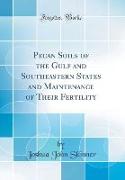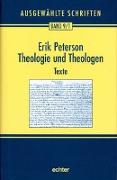- Start
- Pecan Soils of the Gulf and Southeastern States and Maintenance of Their Fertility (Classic Reprint)
Pecan Soils of the Gulf and Southeastern States and Maintenance of Their Fertility (Classic Reprint)
Angebote / Angebote:
Excerpt from Pecan Soils of the Gulf and Southeastern States and Maintenance of Their FertilityCalifornia, where soils and temperatures are favorable, pecans are grown in limited areas by supplying water through irrigation. In the northern United States there are vast areas where soils and rainfall are favorable for pecan production, but temperature is the factor that limits production at least until varieties are found that are adapted to the short season and low temperature during the growing season. Even within the area that is favorable for growing pecans, many factors may preclude profitable production under existing conditions. Nutritional deficiencies, poor soil drainage and aeration, low-yielding varieties, and injury from insects and diseases are factors that may cause low yields and pecans of poor quality, and may prevent profitable production on any soil. In most cases these limiting factors can be eliminated, but not always economically in view of the present pre vailing prices of pecans.The distribution and characteristics of the soils on which pecans are grown have been studied in considerable detail. This work has been done in the field by examining conditions in a large number of the principal commercial pecan orchards (13, 14, Figure 1 shows the approximate boundary of the principal pecan producing area of the United States with the exception of the irrigated orchards of the Southwest It also shows the general distribution of the principal pecan-producing soils in this area that are known to be best adapted to pecan production. This soil map is based on the classification of Marbut~ For a detailed description and exact location of soil types in a specific locality the county soil survey maps of the Bureau of Chemistry and Soils of the United States Department of Agriculture should be consulted. These soils are designated by symbols in the map legend which distinguish them from soils that, owing to certain unfavorable soil characteristics or to unfavorable environmental factors, are'not adapted to pecan production. The soil boundaries around these desirable soils delineate the potential pecan-producing areas. Small tracts of land unsuitable for pecan production are included within the limits of these soil boundaries. Some of these tracts are on steep slopes, others consist of soil that has become seriously impaired or on which drainage is inadequate. Impairment may be due to excessive erosion or to extreme depletion of available plant-food material. But whatever the cause, it should be recognized that these tracts are present in all parts of the pecan producing belt and that they are not suitable sites for commercial pecan orchards.About the PublisherForgotten Books publishes hundreds of thousands of rare and classic books. Find more at www.forgottenbooks.comThis book is a reproduction of an important historical work. Forgotten Books uses state-of-the-art technology to digitally reconstruct the work, preserving the original format whilst repairing imperfections present in the aged copy. In rare cases, an imperfection in the original, such as a blemish or missing page, may be replicated in our edition. We do, however, repair the vast majority of imperfections successfully, any imperfections that remain are intentionally left to preserve the state of such historical works.
Folgt in ca. 10 Arbeitstagen

